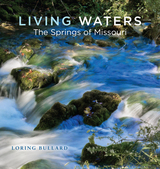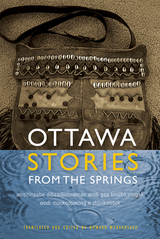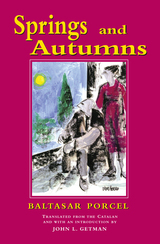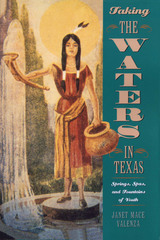
By visiting the sites, gathering local historical accounts, interviewing local citizens, and photographing remaining artifacts, Bullard has done a masterful job in providing the answers to why these vibrant social centers came to be and why they faded.

From the earliest times, springs were also sources of fascination. “Where does all that water come from? Why is it so cold?” Bullard gives us the science of spring hydrogeology; at the same time, he reminds us that springs were once revered symbols of renewal, purification, and everlasting life. They are no longer as central to the lives of Missourians. But are they still important to us? The answer to that question (and others) can be found in Living Waters.


Springs and Autumns is a compelling novel that chronicles, through the voices of several family members, the intriguing history of an extended Majorcan family. The novel is set in Orlandis (a fictional version of Porcel’s hometown) on the island of Majorca. Even though the novel rises from this specific, exotic island setting, Springs and Autumns ultimately appeals to universal human emotions.
John German has captured the rhythm and poetic nature of Porcel’s prose in his translation of Springs and Autumns. Working from Porcel’s original Catalan and Spanish versions of the text, Getman manages to remain faithful to the feel and tone of Porcel’s narrative while at the same time creating an exceptionally lucid English version.
Although the entire novel takes place as the family gathers at Taltavull Hall for a Christmas Eve dinner, the reader is conveyed to places as far away as South America and Asia, learning along the way about murder, love, rape, incest, travel, discovery, regret, and forgiveness. Porcel accomplishes this through a narrative strategy that pieces together a complex mosaic of the family’s history, with each new narrative layer adding insight to the previous narratives, ultimately creating a complex and engaging novel.



"It is well known that Southern Texas possesses a greater variety of Mineral Waters than any other country on the globe" enthused a promotion for one of Texas' many watering spas of the nineteenth century. Though most are closed and nearly forgotten today, Texas spas and resorts once drew thousands of visitors from across the country, seeking healing of body and spirit in the rejuvenating mineral waters.
This book offers the first comprehensive history of Texas' healing springs. Janet Valenza tracks the rise, popularity, and decline of the "water cure" from the 1830s to the present day. She follows the development of major spas and resorts, such as Mineral Wells and Indian Hot Springs near El Paso, as well as of smaller, family-run springs. She also describes how mineral waters influenced patterns of settlement, transportation routes, commerce, and people's attitudes toward the land. Period photos and quotes from those seeking cures offer vivid glimpses into the daily life at the springs, which Valenza lists and describes county-by-county in the appendix.
READERS
Browse our collection.
PUBLISHERS
See BiblioVault's publisher services.
STUDENT SERVICES
Files for college accessibility offices.
UChicago Accessibility Resources
home | accessibility | search | about | contact us
BiblioVault ® 2001 - 2025
The University of Chicago Press









